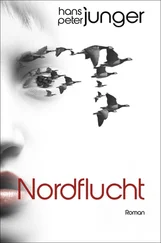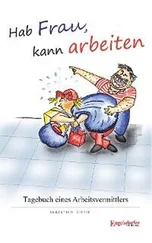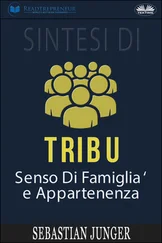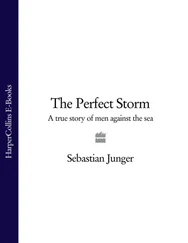Diamonds are not particularly rare geologically, and not particularly valuable intrinsically; they mainly cut things well, which makes them worth up to about thirty dollars a carat for most industrial applications. What gives diamonds tremendous economic power is the fact that 70 to 80 percent of the world’s gem-quality diamonds flow through a group of companies collectively known as De Beers, which regulates the availability of diamonds so that prices remain high. In the late 1920s, when the diamond industry was in complete disarray, Sir Ernest Oppenheimer soaked up most of the world’s supply and began price setting in such a way that the industry remained profitable. Today De Beers mines 50 percent of the nearly seven billion dollars’ worth of the world’s gem diamonds produced every year and buys another 20 to 30 percent through its Central Selling Organization. The CSO takes these diamonds, sorts them into shoebox-size parcels, and then sells them to a total of about 120 “sightholders” throughout the world. The sightholders often do not see the stones before they buy them and pay whatever price De Beers asks.
Approximately half the De Beers sightholders are based in Antwerp, Belgium, Europe’s traditional diamond hub. Until recently a value added tax—a small fee levied on raw materials when they are processed—was so easy to dodge that a twenty-billion-dollar-a-year industry paid only eight million dollars a year in taxes. The industry is regulated by the Hoge Raad voor Diamant, the Belgian Diamond High Council, which serves both to represent Antwerp in the international market and to monitor the industry on behalf of the Belgian government. The council is charged with evaluating diamond imports and certifying their country of origin. For the purposes of the Diamond High Council, the country of origin is simply where the stone was last exported from. That clause—in a nutshell—is the heart of the illegal diamond trade.
Under the laws of Sierra Leone—which Sankoh was charged with upholding—every diamond mined in the country must be brought to a Government Gold and Diamond Office to be weighed, classified, and assigned a value. If the licensed exporter wants to sell the stone, he pays a 2.5 percent tax, and the stone or parcel of stones is sealed in a box and stamped. The box is not supposed to be opened again until it reaches its destination. Foreigners often team up with citizens of Sierra Leone who hold mining licenses and then make arrangements with landowners to mine their land in exchange for a portion—usually between a third and a half—of whatever diamonds are found.
One of the reasons the export tax on diamonds is so low is that to some degree, it is a voluntary tax. Diamonds are the most concentrated form of wealth in the world; millions of dollars’ worth can fit into a pack of cigarettes. Diamonds are so small, so valuable, and so easy to conceal that if taxes on them rise above a certain level, overall revenue falls because people simply start smuggling. Some people hide the stones on their person and board a plane for Belgium; others transport them overland to Guinea or Liberia and sell them on the local black market. The places to hide a diamond are almost limitless. They are heated and dropped into tins of lard. They are sewn into the hems of skirts. They are encased in wax and taken as suppositories. They are swallowed, hidden under the tongue, burrowed into the navel, or slipped into an open wound that is then allowed to heal.
A rebel group such as the RUF would not bother to resort to any of those measures; it would simply smuggle them overland. Diamonds are carried out on foot over the maze of jungle paths that connect Sierra Leone to Liberia, or they are taken out by light airplane. Marcus Bleasdale said that when he was in Kono, he heard planes landing and taking off regularly, though he wasn’t allowed anywhere near the airstrip. Once in Liberia—or Guinea, or Burkina Faso—the stones are passed off as domestic and shipped to the international markets of Antwerp and Tel Aviv. According to reports by the United States Geologic Survey, the total output from all of Liberia’s diamond mines is only 100,000 to 150,000 carats a year, yet the Diamond High Council logged Liberian diamond imports averaging six million carats a year between 1994 and 1998 alone. It is no mystery where the discrepancy comes from, and the same problem exists in Angola, where UNITA rebels have sold around three billion dollars’ worth of illegally mined diamonds to fund a war that to date has killed half a million people.
This has all come to light in the West in just the past few months, beginning with a report about RUF diamond mining by a nonprofit group called Partnership Africa Canada. That was followed by a report from Robert Fowler, Canada’s ambassador to the UN. Both papers made it quite clear: If international diamond brokers made a concerted effort to avoid buying illicitly mined diamonds, groups such as UNITA and the RUF would have a much, much harder time bankrolling their wars. Since then, De Beers has urged punitive action against any dealers trafficking in so-called conflict diamonds. By mid-June the UN proposed a ban on the export of all Sierra Leonean diamonds that have not cleared customs in Freetown. And the European Union decided to halt foreign aid to Liberia because of Liberian president Charles Taylor’s support of the RUF.
Nonetheless, selling illicit diamonds in Antwerp is still just a matter of a few phone calls. And so for the past ten years, Sierra Leonean diamonds have flowed unchecked across the porous border of Taylor’s corrupt little country. Not surprisingly, Taylor was one of the original supporters of Sankoh back in 1991, when the first hundred RUF fighters crossed over the Mano River. Equally unsurprising, Sankoh’s posting as head of the Commission for the Management of Strategic Resources—diamonds, essentially—did absolutely nothing to stem the flow.
The diamond fields start right outside Bo; you can see them alongside the road east to Kenema. They’re just gravel pits carved out of the jungle, dotted with teenage boys in their underwear shoveling mud. We drove out there the following day with James Kokero, racing along one of the only good highways in the country, past mud-walled villages and upland farms hacked out of the bush. Some clearings were still smoking from the burnovers that precede planting season. “I used to farm,” said Kokero sourly, “farm and mine. You mine for the money; you farm to eat.”
The young miners were friendly, stopping their work to ask for cigarettes when we pulled over. They worked in shifts in the hammering sun, digging down into the diamond-bearing gravel and piling it up on the side to be sorted. Alluvial mining is not dramatic or dangerous or even costly; it just requires a lot of people digging. Larger operations use draglines and bulldozers to get through what is known as the overburden, but people interested in those kinds of investments have mostly disappeared from Sierra Leone.
Almost anyone, however, can set up a small-scale alluvial mining operation. The diggers are fed rice twice a day, paid a nominal amount of money, and given a share of whatever diamonds are found. The gravel gets shoveled out of steep-sided pits and then pumped into small steel washing plants that are run off a generator. There it is mechanically sorted for size, sluiced for gold, and then carted off to a secluded area—usually behind a rattan fence—to be picked through for diamonds. Typically, a third of the stones are turned over to the workers, a third are kept by the financial backers, and a third are given to the landowner. Obviously, it’s a system full of opportunities to steal someone blind.
Sierra Leone was founded in 1787 as a colony for slaves freed by the British during the American Revolution. Diamonds were discovered there in 1930. Legend has it that, when word got around, the British started telling locals that the stones were electric and dangerous to touch. Their advice was to leave them alone until a white man could get there. On a larger scale, that was essentially how the colonial government of Sierra Leone handled its newfound wealth: In 1937 it sold a De Beers–owned company exclusive mining rights to the entire country for the next ninety-nine years. De Beers quickly got production levels up to a million carats a year, but it was only a matter of time before the locals realized that instead of working for De Beers they could just find diamonds on their own. Soon there were tens of thousands of illicit miners in Kono washing river gravel in homemade sieves and selling whatever they found to Lebanese and Mandingo traders. At first, the traders sold their stones in Freetown, but then, when that got too difficult, they smuggled them across the Mano River into Liberia.
Читать дальше












